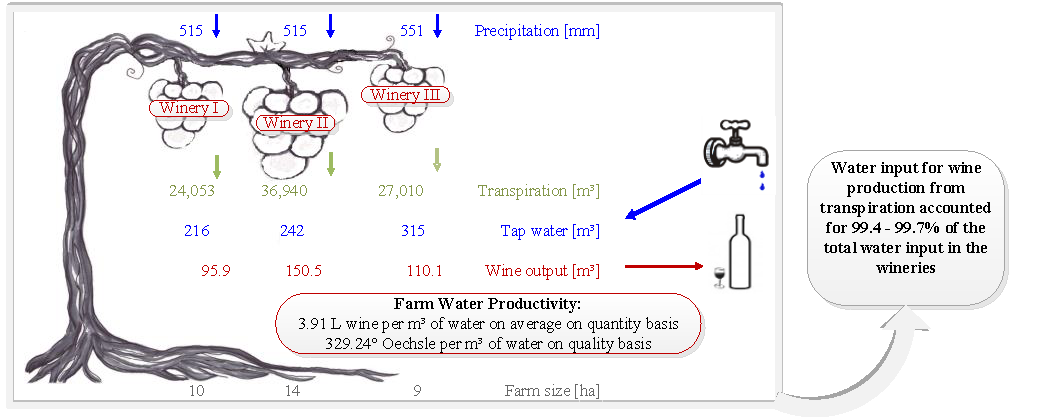The German wine sector has encountered new challenges in water management recently. To manage water resources responsibly, it is necessary to understand the relationship between the input of water and the output of wine, in terms of quantity and quality. The objectives of this study are to examine water use at the farm scale at three German wineries, and to develop and apply, for the first time, a quality-based indicator. Water use is analyzed in terms of wine production and wine-making over three years. After the spatial and temporal boundaries of the wineries and the water flows are defined, the farm water productivity indicator is calculated to assess water use at the winery scale. Farm water productivity is calculated using the AgroHyd Farmmodel modeling software. Average productivity on a quantity basis is 3.91 L wine per m3 of water. Productivity on a quality basis is 329.24 °Oechsle per m3 of water. Water input from transpiration for wine production accounts for 99.4–99.7% of total water input in the wineries, and, because irrigation is not used, precipitation is the sole source of transpired water. Future studies should use both quality-based and mass-based indicators of productivity.

